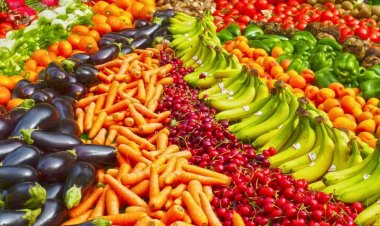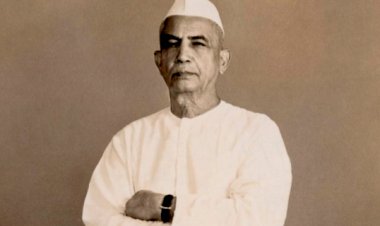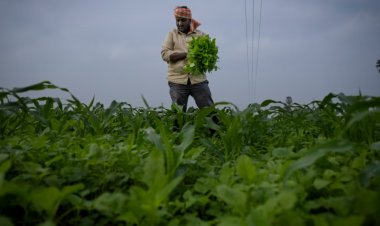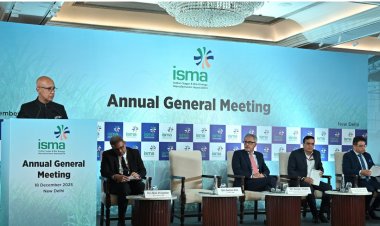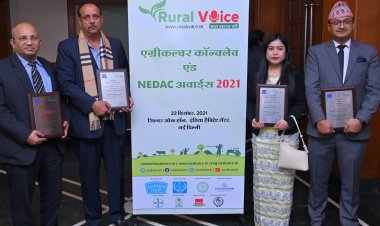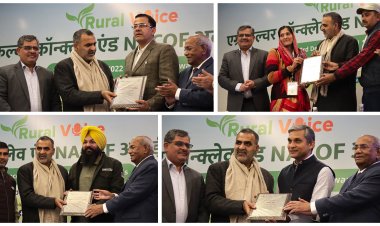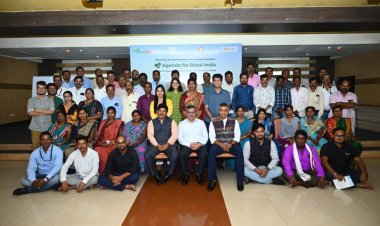Challenges before Indian agricultural sector
For almost a month, thousands of farmers from different parts of the country are sitting on protest to get the three acts on agriculture passed during this year repealed.
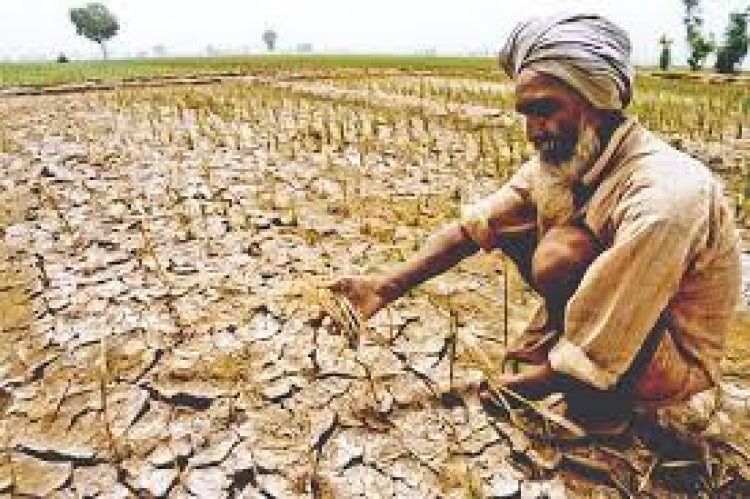
For almost a month, thousands of farmers from different parts of the country are sitting on protest to get the three acts on agriculture passed during this year repealed. Largely led by farmers from Punjab, Haryana, Uttar Pradesh and Rajasthan, these farmers have been demanding the repeal of the Farmers' Produce Trade and Commerce (Promotion and Facilitation) Act, 2020 (FPTC), the Farmers (Empowerment and Protection) Agreement of Price Assurance and Farm Services Act, 2020 (FAPAFS), and the Essential Commodities (Amendment) Act, 2020. These acts which were first announced during the lockdown and then subsequently issued as ordnances were passed without any consultation with the stakeholders including farmers and disregarding the objections raised by the opposition in both houses of parliament.
Despite the government’s assurances including by the prime minister, farmers have refused to budge from their position of complete rollback of these acts. Farmer representatives are justified in demanding so as they do not see these acts merely as acts to facilitate more private sector penetration in agricultural markets but as an outright attack on the way agriculture is organised. While the struggle against these acts is clearly justified given the experience of farmers in dealing with private corporate sector, the limited nature of the demands and the regional concentration of protesting farmers has meant that these protests are seen as protests by rich landowning farmers. Such a criticism is valid to a certain extent.
However, it is also worth noting that while this protest may be localised, farmers have been protesting all over the country in almost all states. Last four years have seen intense protests by farmers of Tamil Nadu, Maharashtra, Rajasthan, Chhattisgarh, Karnataka, and Telangana and so on. In Madhya Pradesh, protesting farmers were fired upon by the police killing five farmers. But even for other states, there has been increasing farmer unrest. In most states, the demand has generally been loan waiver or demand for public procurement. What is common among all these protests is a general sense of agrarian unrest, the root cause of which is declining profitability in agriculture.
While there has always been a risk in agriculture which has been increasing since the 1991 economic reforms, there is increasing distress in the last ten years. The situation has worsened after 2014 with the new government taking over led by Prime Minister Narendra Modi. while there have been attempts by successive governments to respond to these protests by offering loan waivers and cash transfers as part of PM-KISAN, these have failed to create better incomes for farmers. As a result, despite these efforts farmer incomes continue to remain under pressure.
The problem is not just the demand by the farmer groups which is centred on immediate relief, whether it is loan waiver or cash transfer or the repeal of these bills and demand for guaranteed Minimum Support Price (MSP) but the nature of solution offered by the government. Governments, state as well as central are too happy to give loan waivers (majority of states have now given some form of loan waiver) and cash transfers as has been done by Telangana, Odisha and the central government. However, most of these demands as well as solutions are trying to treat the system rather than the issues which plague Indian agriculture. The issue that needs to be debated is why farmers get into debt trap and why do they need the state to procure the grains.
The real issue is the changing nature of agriculture and the changing nature of interaction between the state, farmers and the private sector. There has been a drastic change in the nature of agriculture but also the way production in agriculture is organised. Perhaps the biggest change has been the changing cropping pattern. Unlike the 1970s and 1980s, today non-food grain crops account for a large share of crops. Some of this is driven by emergence of cash crops as favoured crops which include cotton and several others. But there is also a shift towards horticulture crops with production of fruits and vegetables now surpassing food grains. This brings in focus two different challenges. First, most of the cash crops as well as fruits and vegetables are much more dependent on private trade with increasing dependence on markets. The second is the nature of market infrastructure which requires large investments in logistics, storage, and transportation and so on. Along with these, there has been a general trend towards mechanisation aided by accessibility of credit. The increase in mechanisation has also contributed to another trend which is the monetisation of agriculture. Unlike 30-40 years back, not only agriculture requires more cash for inputs but also a large part of output trade is monetised. As a result, agriculture is now more dependent on access to capital mainly in the form of credit for majority of small and marginal farmers who do not possess their own saving. This is one of the reasons for the increase in loan defaults and the demand for loan waivers.
But the primary reason why farmers are making losses are also the increasing cost of cultivation which has increased faster than the output prices. This trend has got accentuated due to withdrawal of the government in providing subsidy to various inputs. For example, fertiliser prices increased drastically after the introduction of the nutrient based subsidy regime in 2010. So is the case with diesel and electricity where government has managed to eliminate subsidy altogether for diesel and for electricity in many states. But with rising intensity of agriculture and water table going down, there is also more energy needed making cost of cultivation go up.
All of these are expected but what has made matters worse is the government policy which fears inflation much more than farmer’s income. As a result of various government intervention whether it is the misuse of export-import tariffs and essential commodities act, governments have been sensitive to any rise in prices of agricultural commodities. Last six years have been period of lowest food inflation but in general for agricultural price inflation. As a result, terms of trade has moved against agriculture in the last six years.
What is obviously clear that agriculture is no longer treated as priority sector and subsequent governments have contributed to making agriculture unviable? What is also implied is that for agricultures to be sustainable and viable, there is an urgent need to question the economic model which has been followed by governments since 1991. That will require unity of farmers across states but also across issues. The issue of mandis and MSP are hardly relevant for farmers in Bihar, West Bengal and Assam where the APMC system does not work. But the larger issues remain the same. Same is the case of loan waiver which is only a symptom of a larger problem of continuous losses in agriculture which cannot be solved by loan waivers. It is time farmer unions came together to articulate a unified demand on behalf of farmers of all states. This will only be possible when there is a broad understanding of the challenges faced by Indian agriculture in the 21st century.
(Himanshu is Associate Professor in Economics at the Centre for Economic Studies and Planning,
School of Social Sciences, Jawaharlal Nehru University)



 Join the RuralVoice whatsapp group
Join the RuralVoice whatsapp group

















